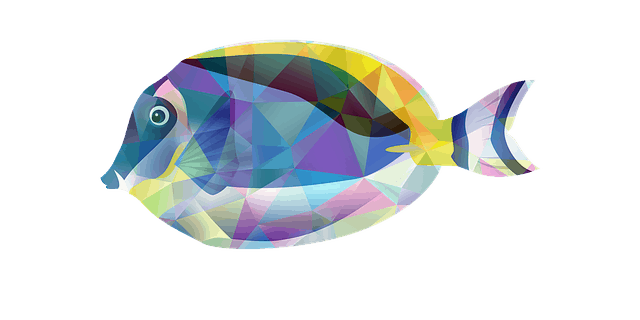If you have a community tank and have recently noticed a change in some of your fish (more specifically, they’re losing their once-vibrant coloring), you need to act immediately! Pigmentation is often a sign of health. In other words – the brighter the hue, the healthier the fish!
Should you happen to find a dead fish at the bottom of your tank that has turned completely white, you may be wondering what could have caused such a drastic change in coloration. Well, the reason for this includes the following:
Oxygen, sunlight, and food all attribute to fish coloring. When a fish dies, air, light, and nutrients are no longer circulating through its body, therefore causing it to turn white. A dead fish will rot quickly in water and turning white is part of the post-mortem process.
Now that you know why fish turn white when they die, let’s explore this topic further and in more detail below. In this article, I’ll discuss why fish lose their coloring when living and after dying, what the leading causes of fish death are, and what to do to help ensure their survival. I’ll also explain why turning white doesn’t necessarily mean a fish is sick (such in the case of goldfish, for example).
So, if you’re reading learn more about fish and why they turn white, then let’s get to it!
Why Does a Fish Turn White?
If you notice your fishing turning white, the reason could be either illness or stress. A disease-provoking parasite or a bacterial infection might be the culprit. Poor water quality, over-cleaning the tank, bullying by other fish, advanced age, inadequate nutrition, and over-crowding may also be the root cause.
The absence of sunlight might as well make fish change color from to bright to white. Some species (like goldfish, for example) contain scale pigments that react specifically to light and if deprived of it, will start to lose their coloring over time.
Lack of oxygen in the water may also cause fluctuations in fish coloring. When fish aren’t getting enough O2, you’ll notice them becoming slower and weaker. Labored breathing, rapid gills movements, and loss of pigmentation are all signs of oxygen-depletion.
Why Do Fish Lose Their Color When They Die?
When a fish is deprived of oxygen, food, and sunlight, it’ll lose its coloring very quickly – hence why it often turns white after it dies. The lack of 02 combined with the absence of sunlight and the loss of nutrients will strip the skin of its vibrant hue.

Why is My Fish Changing Color?
Environment factors are among the leading causes of change in fish coloration. These could be biotic (living organisms such as fish and plants in an aquarium) or abiotic (non-living chemical elements such as water, soil, and sunlight) in nature and include the following:
Fluctuations in Water Quality
Changes in pH levels as well as increases in toxic ammonia will often affect fish coloring, causing them to appear lighter/whiter. To remedy this, add live plants to the tank. As well, do a partial water change by removing 15% of the existing tank water and check the pH with a chemical testing kit.
Lack of Sunlight
Certain species of fish (like koi of goldfish) rely on sunlight to develop healthy skin pigmentation. Inadequate lighting can cause discoloration, making scales appear lighter or faded. To counteract this problem, place the aquarium in a spot where it can receive 12 hours of natural light per day.
Insufficient Oxygen Levels
Lack of oxygen in the water will negatively affect fish coloring. To prevent scales from fading and appearing lighter than normal, increase surface agitation or water movement by installing an air pump in the aquarium.
Too Bright Artificial Light
An aquarium light that’s too bright or on for too long will fade fish coloring. Limit the amount the time the light is turned on for (no more than 12 hours per day) and provide plenty of shaded hiding places for fish to retreat to.
Stress and/or Illness
Anxiety and disease will also cause fish to lose their pigmentation and appear whiter in color. A parasitic or bacterial infection, loss of companionship, lack of food, aggressive tank mates, and being moved from one tank to another are the usual suspects.
What Does a Fish Look Like When It’s Dying?
There are ways to determine in advance that your fish is likely to die. Floating lethargically on the surface and/or laying dormant at the bottom is often a good indication of impending death. Labored breathing, sunken eyes or cloudy pupils, and loss of pigmentation are also signs of a dying fish.
Is it Bad for Goldfish to Turn White?
Goldfish are known to change color several times throughout their life. As it ages, it may turn white, which isn’t a problem provided the fish is still actively swimming and eating well. A white goldfish can still be a healthy goldfish. Chances are its parents had white markings, which makes it genetic in nature.
Over-exposure to light could also be the cause of your goldfish turning white. If you’ve recently moved your aquarium to a spot with more sunshine, try putting back in its original spot to see if this helps the fish regain its natural coloring.
Changes in the aquatic environment may also be the cause of your goldfish turning white. Even small fluctuations in water temperature or pH can affect your goldfish’s pigmentation. Other modifications made to the tank such as the addition of new fish, plants, or decorations can all affect fish coloring.
Sickness and stress are among the leading causes of goldfish turning white. Certain medications that are administered to counteract disease can also result in pigment changes. If you suspect your fish is ill, take it to a vet to determine both the underlying cause and the best the course of action.
Do Fish Lose Color When Stressed?
As already stated above, stress is indeed a factor in fish changing tone from bright to white. Vibrant coloring is often a sign of healthy fish. Once hues start to fade or lighten, it could be an indication of an unhappy or stressed out fish.
There are many factors that could increase anxiety in fish. Substandard water conditions, over-or under-cleaning the tank, bullying by tankmates, old age, malnutrition, and over-crowding, just to name a few. If you notice changes in your fish’s demeanor along with faded coloration, stress is likely the culprit.
Your best bet is to do a ‘deep’ water change (remove 25% or more of the existing tank water) and then observe the activity in the tank for the next few days. If your fish starts to regain its original coloring, you can rule out stress as the source.
Conclusion
To conclude, there are many factors that attribute to fish coloring including oxygen, sunlight, and food. When a fish dies, there is no longer any air, light, or nutrients circulating through its body. As a result, it loses pigmentation and turns white post-mortem.
The coloration of a fish often reflects its state of health, which is why it is so important to account for hygiene, water quality, and diet on a regular basis. Provided your fish is active and eating, changes in pigmentation shouldn’t be cause for concern.
I trust this article has provided you with the information you seek. Thanks for taking the time to read it and good luck with your aquarium hobby.
Related Posts
What to do when a fish dies in your tank?
Why Do Fish Open and Close Their Mouths All the Time?
How to Get Rid of a Dead Fish? (Do it Right)




